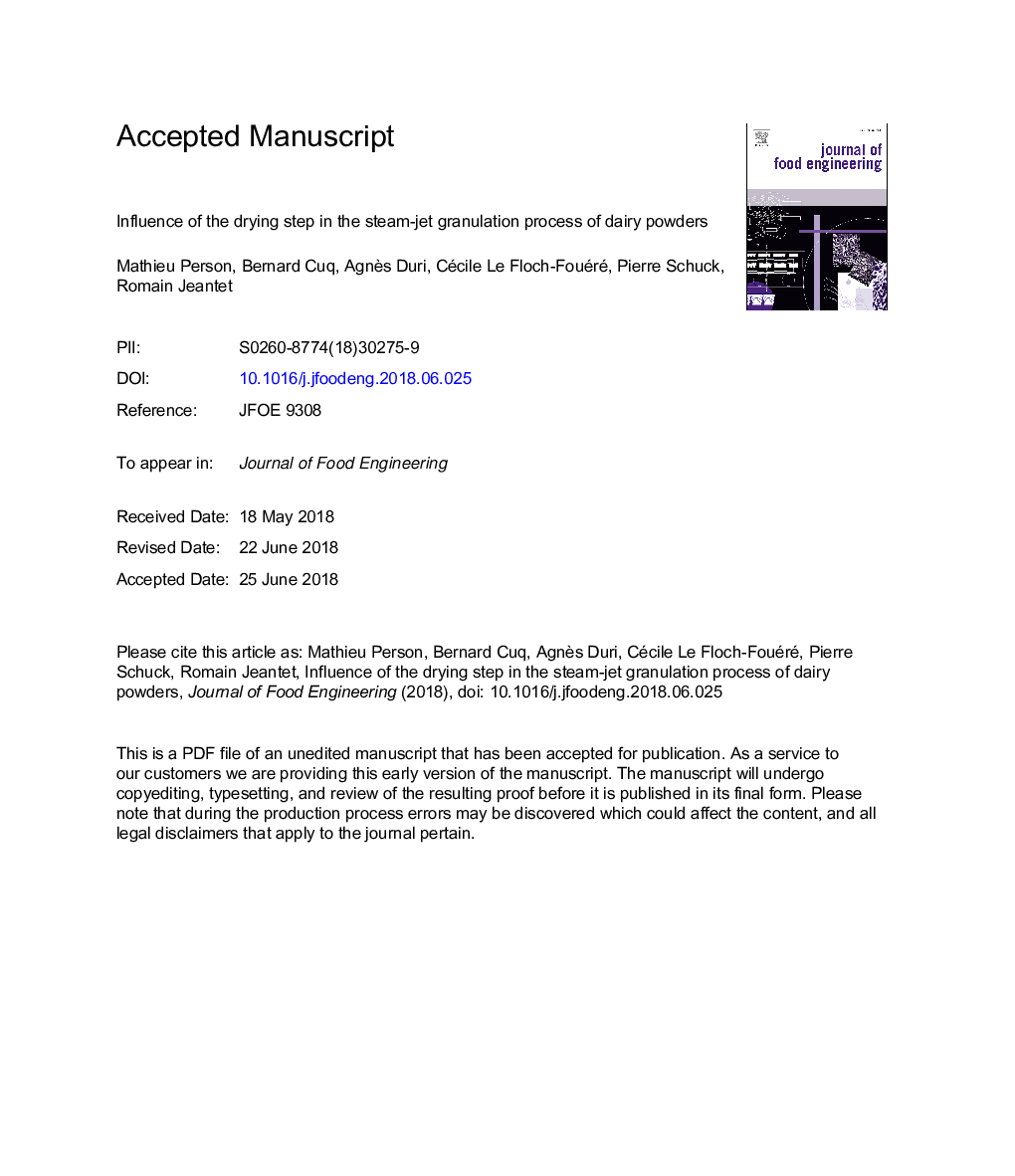| Article ID | Journal | Published Year | Pages | File Type |
|---|---|---|---|---|
| 6664379 | Journal of Food Engineering | 2018 | 34 Pages |
Abstract
Steam-jet granulation process consists in agglomeration mechanisms promoted by the wetting of fine particles and colliding them to generates the agglomerates, and in consolidation mechanisms of the agglomerates by drying stage. The aim of the present study was to evaluate the influence of the drying step on the properties of the agglomerates. Experiments were conducted using an original pilot system with different drying conditions (time and temperature). We demonstrated that the mechanisms induced by drying stage contribute to the final structure and characteristics of the agglomerates. On the other hand, the changes in drying temperature (70, 90, or 110â¯Â°C) did not significantly impact the structural properties. The rehydration properties of the agglomerates were found to depend on the changes in water content. During the first minutes of drying, a rapid decrease of the wetting time of the agglomerates was observed and associated with rapid lactose crystallization. For long drying times, the large decrease in water content induced a considerable increase in the glass transition temperature, leading to a delay in the plasticization effect of the water during rehydration. The drying stage is a key factor to control the stability and functional properties of agglomerates.
Related Topics
Physical Sciences and Engineering
Chemical Engineering
Chemical Engineering (General)
Authors
Mathieu Person, Bernard Cuq, Agnès Duri, Cécile Le Floch-Fouéré, Pierre Schuck, Romain Jeantet,
